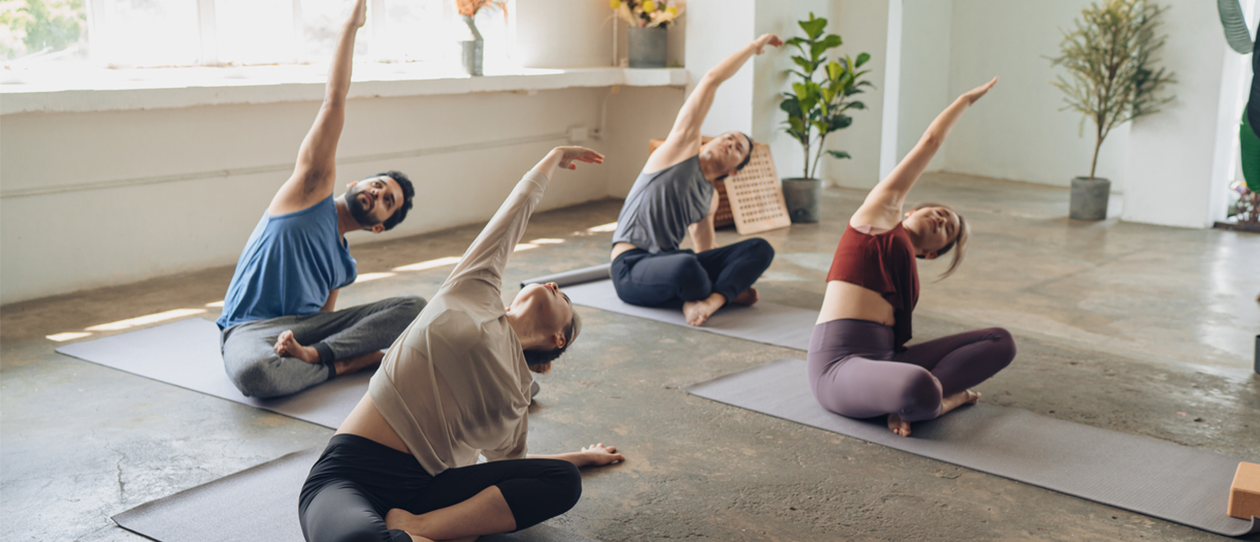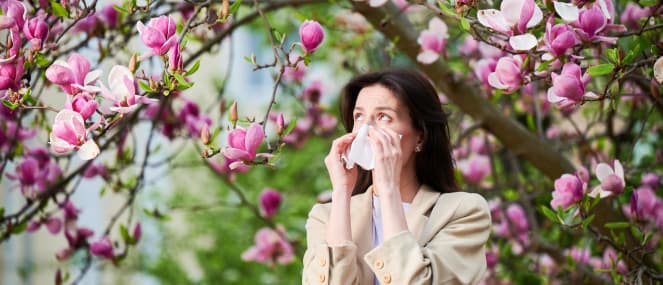
- Health hub/
- Stress relief & sleep support/
- The 11 Styles of Yoga Guide


It's a great idea to try as many yoga styles as you can and even choose a one depending on your mood, energy and goals. For example, a vinyasa style yoga is generally suited to when you are feeling more energised, while yin yoga is more suited to when you would like to wind down from the day with a more relaxing practice and lots of stretching.
Vinyasa yoga
You will usually see this yoga style termed as vinyasa flow and it is one of the more athletic styles. The term ‘flow’ is fitting, as the style involves synchronising the breath with each movement to flow from one pose to the next. It was adapted from the ashtanga style in the 1980s. In Sanskrit, the classical language of Hinduism, and the language of yoga, Vi’ means variation and ‘Nyasa’ means within prescribed limits. The sequence can become quite a meditative flow. This style is great for those who like to continuously move their body.
Kundalini Yoga
This style is equal part spiritual, equal part physical and was brought to the West in the 1960s. Kundalini means "life force energy" thought to be contained in the base of our spines. The yoga sequences are carefully designed to unlock this energy and to reduce stress and negative thinking.
To achieve this involves some chanting, singing and meditation to challenge the body and mind. Kriyas are also involved specific series of poses paired with breath work and chanting. Teachers and students may be wearing white, as it’s believed to deflect negativity and increase your aura. A kundalini class usually starts with a mantra (a focus for the class), then breathing exercises, before warmups and poses, a final relaxation and meditation. The practice involves fast-moving, invigorating postures and breath exercises.
Ashtanga yoga
In Sanskrit, ashtanga is translated as "Eight Limb path." This is why it has eight pillars, such as principles, personal discipline, asana and postures, pranayama, withdrawal, concentration, meditation and salvation. This style is not suited for beginners as it involves quite physically demanding postures. Ashtanga yoga consists of six series of specific poses taught in order. No music is played in ashtanga classes. It is suited to those who like a spiritual practice, routine and a physically challenging practice.
Hatha yoga
The Sanskrit term "hatha" is an umbrella term for all physical postures of yoga. Hatha yoga classes are best for beginners since they are usually paced slower than other yoga styles and are a classic approach to breathing and exercises. Hatha yoga is a great style for those new to yoga.
Iyengar yoga
Iyengar yoga was founded by B.K.S. Iyengar and focuses on alignment and detailed, precise movements.
Generally, poses are held for a long time. It is known for its use of multiple props to help students perfect their form and go deeper into poses in a safe manner. This style is great for people with injuries who need to work slowly. It is less intense than other types of yoga so is generally suitable for all levels. Because of the static nature of the sequences, it is great for older adults, for those who likes detailed instruction and anyone with physical limitations.
Yin yoga
This style involves long holds approximately 2 minutes each, which makes it quite meditative. It relies on gravity to do the work, often using props to achieve this. While other styles target the major muscle groups, yin yoga targets the connective tissues. The practice can help physically balance against any tough workouts and the long holds provide a great opportunity to practice the power of stillness. It is great for anyone looking for a slower practice and to stretch out their body.
Anusara yoga
Anusara yoga is a modern version of Hatha yoga and is most similar to vinyasa in that it focuses on alignment, but it is also known to emphasise heart opening.
Bikram yoga
This yoga style was named after Bikram Choudhury and involves performing a sequence of 26 postures with each one performed twice and in a hot room of approximately 37 degrees and 40 percent humidity. Practicing yoga in a heated environment can help students get deeper into postures while at the same time, detox the body.
Those who like to sweat, who like routine and a more vigorous practice will enjoy Bikram yoga.
Prenatal yoga
Yoga is a great workout for pregnant women, with sequences suitable for all trimesters. It provides postures, pelvic floor work and stretching to help ease pregnancy pains. It also includes bonding with the growing baby. There are breathing exercises that help for during labour and delivery.
There shouldn’t be any poses that might be too unsafe for the changing body, though it’s always best to check with your doctor before beginning a yoga program during pregnancy.
Props are often used to modify the poses so they are safe and stable for pregnant women. This practice is also great for new mothers who are easing back into exercise.
Restorative yoga
The name says it all in this style of yoga. It is focused on relaxing the mind and body after a long day.
You spend more time in fewer postures. Many of the poses are modified so that you are supported by them, making them easier and helping you to sink deeper into relaxation.
Poses are held for at least five minutes but often longer. Falling asleep in this class is a frequent occurrence. This style is great for anyone who needs to de-stress and may find it hard to Sanskrit is the classical language of India and Hinduism or may be dealing with pain.
Jivamukti yoga
Jivamukti is mainly vinyasa flow style classes infused with Hindu spiritual teachings. It emphasizes connection to Earth, so most Jivamukti devotees follow vegetarianism.
A series of chants usually open the beginning of class followed up by a series of poses that align with the five tenets of Jivamukti yoga and philosophy.




